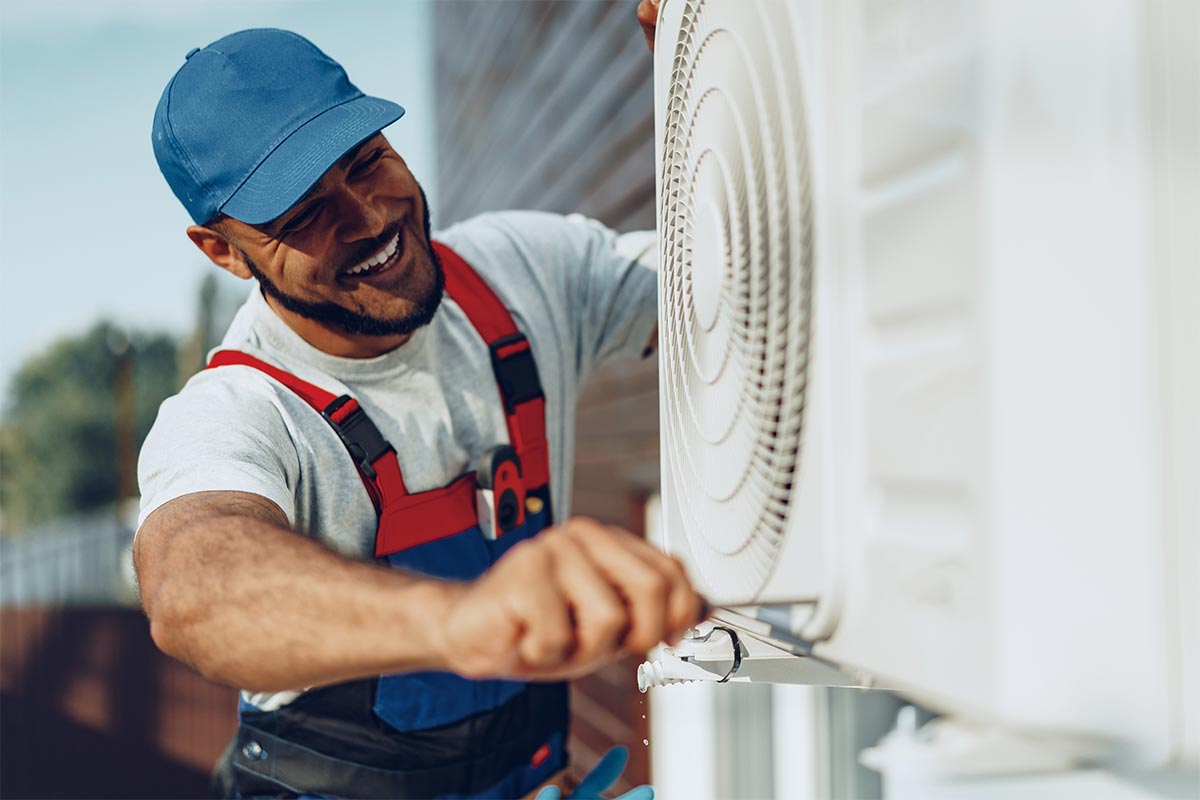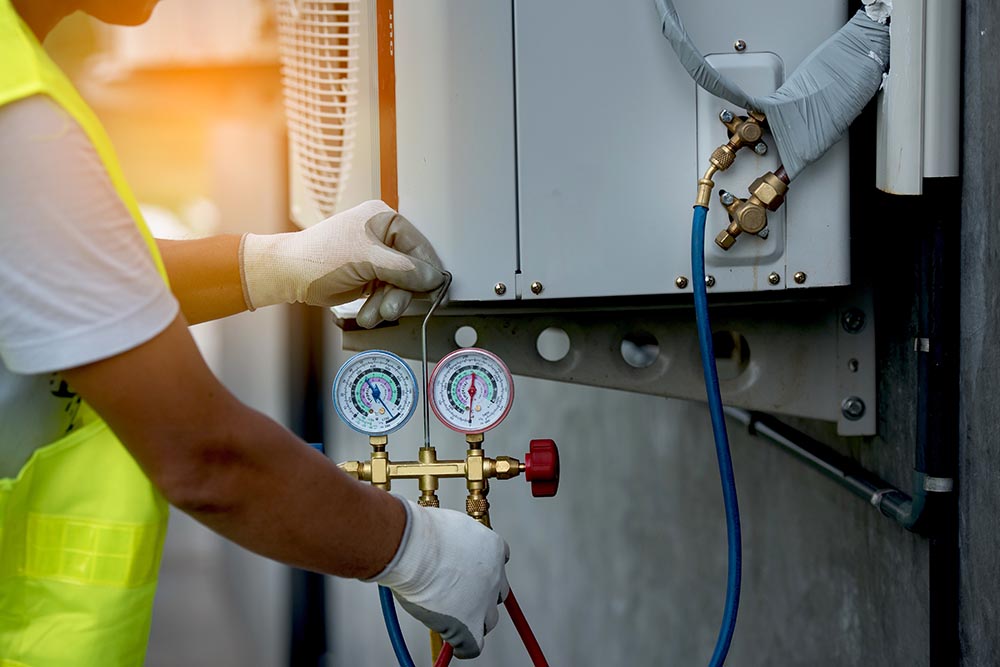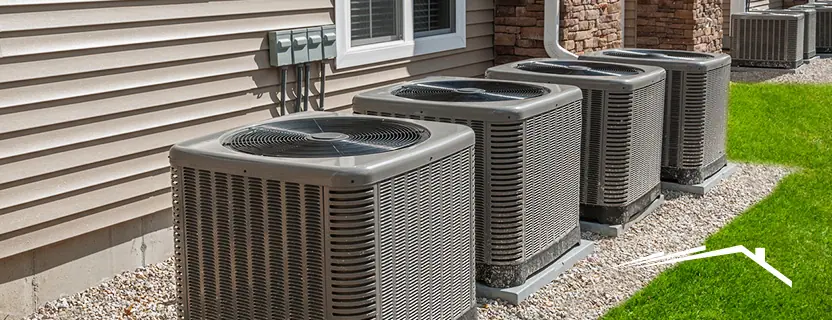Cost Breakdown of Repair vs Full furnace replacement
Cost Breakdown of Repair vs Full furnace replacement
Blog Article
How a Heatpump and Furnace Job Together to Maximize Your Home's Home heating Efficiency
Recognizing exactly how a warm pump and heating system collaborate is necessary for house owners seeking effective heating solutions. Each system has its toughness, offering a well balanced strategy to home comfort. The warmth pump masters moderate temperatures, while the heater delivers rapid warmth throughout severe cold. This synergy not only decreases power expenses but likewise improves the lifespan of both home appliances. What elements affect this cooperation, and how can home owners optimize their advantages?
Recognizing Warm Pumps: How They Work
Several people may be strange with their internal workings, warm pumps play an essential function in modern-day heating systems. These gadgets run by transferring warmth from one area to an additional, utilizing the concepts of thermodynamics. In chillier months, a heatpump removes warm from the outside air, ground, or water, and transfers it indoors to heat the space. Alternatively, during warmer months, it can reverse the process, working as an air conditioning unit by removing warm from inside to the outside.Heat pumps consist of an evaporator, condenser, compressor, and expansion shutoff. The cooling agent within the system absorbs heat as it evaporates at low temperature levels and pressures. The compressor after that boosts the pressure and temperature of the refrigerant, allowing it to launch heat as it condenses. This efficient process can considerably decrease power consumption compared to conventional heating techniques, making heatpump a lasting choice for climate control in homes.
The Role of Heaters in Home Heating
Heaters play a crucial function in home heating by supplying a reliable source of warmth during the cooler months. They operate by generating warmth through combustion or electric resistance, dispersing it throughout the home using air ducts or glowing systems. The effectiveness of a furnace is usually determined by its Annual Fuel Utilization Efficiency (AFUE) rating, which shows how successfully the system converts gas right into heat.Furnaces can utilize different power sources, consisting of gas, oil, lp, or electrical energy, enabling property owners to choose the most suitable choice for their needs. Unlike heatpump, which might have a hard time in extreme cool, heating systems keep regular efficiency, ensuring that interior temperature levels continue to be comfy no matter of outdoor conditions. In addition, modern heating systems typically come geared up with advanced technology, such as variable-speed blowers and smart thermostats, boosting their performance and responsiveness. This adaptability makes heaters an important part in all-encompassing home heating approaches.

Benefits of Making Use Of Both Systems Together
Combining the toughness of both heaters and warmth pumps can lead to an extra reliable and reliable home heating option. Using both systems allows home owners to make use of the heatpump's energy efficiency during milder temperatures while depending on the heater for even more severe cold problems. This double approach can considerably minimize energy prices, as heatpump consume much less electrical energy than conventional home heating techniques when temperatures are moderate.Additionally, making use of both systems together can boost convenience levels in the home. Warmth pumps can offer regular, also home heating, while furnaces can swiftly increase ambient temperatures when required. The combination of both systems can expand the lifespan of tools by decreasing wear and tear on each device, as they share the workload. Eventually, house owners can delight in a well balanced, cost-effective heating option that readjusts flawlessly to varying climate condition, guaranteeing a cozy and welcoming home throughout the cold weather.
Exactly How Heat Pumps and Furnaces Complement Each Other
They produce a complementary home heating system that maximizes effectiveness and convenience when house owners integrate warm pumps and heaters. Heatpump run by transferring warm from the outside air or ground, making them extremely efficient in modest climates. They stand out during milder temperature levels, offering affordable heating. On the other hand, heating systems create warmth via burning or electrical resistance, providing solid, instant warmth throughout severe cool conditions.The combination of these 2 systems enables for vibrant modifications based on temperature level changes. During warmer months or milder winter season days, the warmth pump can take the lead, conserving power and reducing costs. As temperature levels decrease, the heating system can perfectly engage, ensuring regular heat throughout the home. This harmony not only maximizes energy use however additionally improves the life expectancy of both systems, as each device runs within its ideal efficiency array. With each other, they create a well balanced environment that adjusts to differing environment needs.
Optimizing Efficiency: Tips for Homeowners
House owners can improve their heating efficiency via numerous practical techniques. Establishing a routine upkeep routine, incorporating wise thermostat modern technology, and applying effective insulation and sealing remedies are vital actions. These measures have a peek here not just boost comfort yet also reduce energy expenses.
Routine Upkeep Arrange
To ensure optimal heating performance, developing a regular upkeep routine is essential for any home. Property owners ought to prioritize regular examinations of both warmth pumps and furnaces to establish peak performance. This consists of transforming air filters every one to 3 months, as stopped up filters can considerably lower efficiency. In addition, scheduling professional maintenance at the very least once a year enables service technicians to determine and address potential issues before they rise. Homeowners must likewise clean up the heatpump's outside unit to stop debris buildup that can prevent air movement. By adhering to a regular maintenance routine, home owners not only boost their heater' performance yet additionally prolong their life-span, leading to higher comfort and lowered power costs throughout the cooler months.
Smart Thermostat Assimilation
Integrating a wise thermostat into a home heater can significantly boost power performance, specifically as it permits specific control over temperature setups. These tools can learn the these details homeowner's timetable and preferences, immediately readjusting the temperature to optimize comfort while decreasing energy usage. For example, they can decrease heating during times when the home is vacant, reducing unneeded usage. Lots of wise thermostats likewise give real-time power use information, making it possible for home owners to make enlightened choices regarding their home heating behaviors. Additionally, remote accessibility by means of mobile phone applications permits users to adjust settings from anywhere, making certain the home is cozy upon return. Generally, wise thermostat integration not just improves comfort yet considerably adds to power financial savings and efficiency.
Insulation and Securing Solutions
Smart thermostats play a crucial duty in power efficiency, but their efficiency can be substantially improved by appropriate insulation and securing remedies. Homeowners should focus on shielding attics, floors, and wall surfaces to minimize heat loss. High-grade insulation materials, such as spray foam or fiberglass, can substantially enhance thermal resistance. In addition, sealing voids around air ducts, doors, and windows avoids cold air seepage and heat getaway. Weatherstripping and caulking are effective methods for dealing with these leaks - ductless mini splits. Routine evaluations for air leaks, in addition to making use of blower door tests, can help determine issue locations. By investing in insulation and sealing, house owners can maximize the efficiency of their heating systems, ultimately leading to reduced power intake and reduced energy costs
Common Misconceptions Concerning Heat Pumps and Furnaces
What misconceptions border warm pumps and heating systems? Numerous individuals wrongly believe that heat pumps are inadequate in cooler environments. In truth, modern-day warm pumps are made to run efficiently even in low temperatures, supplying reliable home heating throughout winter months. Another typical myth is that heating systems are always more effective than heat pumps. Nonetheless, this depends on the particular energy resources and effectiveness rankings of the systems in inquiry. Some may likewise believe that utilizing both systems simultaneously is unnecessary, but as a matter of fact, this mix can enhance heating effectiveness, especially throughout extreme climate condition. Furthermore, individuals frequently assume that heatpump call for continuous maintenance, when actually, they have comparable maintenance needs to conventional heater. By debunking these misconceptions, house owners can make more educated decisions regarding their heating alternatives, ultimately bring about boosted comfort and power performance in their homes.
Maintenance Considerations for Combined Systems

Regularly Asked Concerns
Can Warmth Pumps Work Efficiently in Incredibly Cold Climates?
Heatpump can struggle in very cool environments as a result of reduced effectiveness and warm removal constraints. Improvements in modern technology have actually led to models made for far better efficiency in such problems, boosting their viability in extreme settings.
How Much Time Do Warm Pumps and Furnaces Typically Last?
Heatpump usually last 15 to twenty years, while heating systems have a life-span of 15 to three decades. Regular maintenance can expand their long life, guaranteeing effective operation and reducing the need for premature substitutes.

What Is the Typical Price of Setting Up Both Solutions?
The average price of installing both a warm pump and a furnace commonly ranges in between $5,000 to $10,000 - furnace replacement. Factors influencing this cost consist of system size, setup intricacy, and regional labor rates
Are There Tax Motivations for Making Use Of Energy-Efficient Heating Systems?
Several property owners ask about tax motivations for energy-efficient heating systems. Various government and state programs typically offer credit ratings or refunds, motivating the fostering of lasting technologies to decrease energy usage and advertise environmental responsibility.
Exactly how Do I Select the Right Dimension Heatpump and Heater?
Picking the right size heatpump and heater includes determining the home's square footage, thinking about insulation high quality, and evaluating neighborhood environment. Consulting a professional can guarantee ideal system performance and energy efficiency based upon specific demands. heat pump replacement ooltewah tn. Comprehending how a warmth pump and heating system job together is important for home owners looking for reliable heating services. In colder months, a warmth pump essences warm from the outside air, ground, or water, and transfers it indoors to warm the living room. When house owners integrate warm pumps and heating systems, they develop a corresponding heating system that makes the most of effectiveness and comfort. Heat pumps run by transferring heat from the outdoors air or ground, making them very reliable in moderate environments. Warm pumps can struggle in exceptionally chilly environments due to reduced performance and warm removal limitations
Report this page